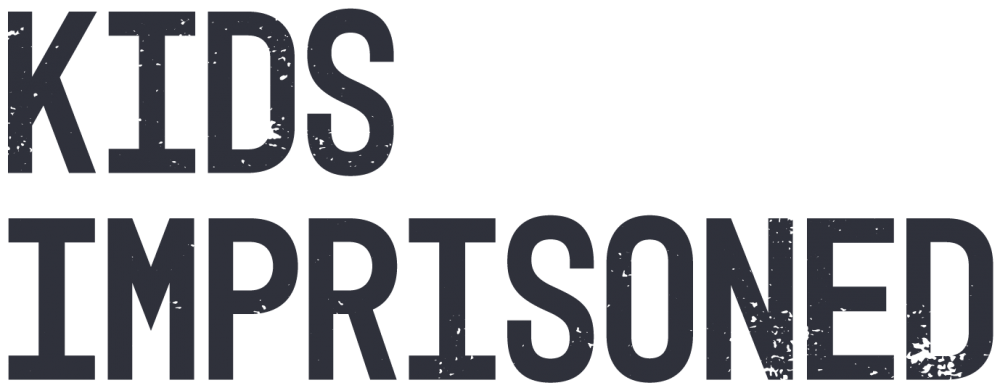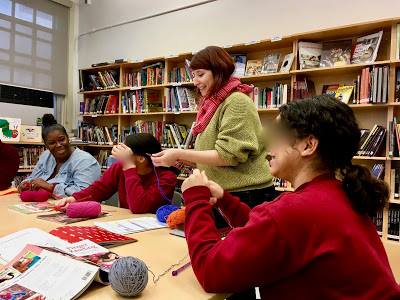Photo illustration by Michele Abercrombie
Literacy is one of the biggest predictors of whether or not a young person will return to the juvenile justice system once they are released.
But since many juvenile detention centers have small-to-nonexistent libraries, it often falls to nonprofits to fill the gaps in the system with book donations and literacy programming.
Dieter Cantu got his GED at 16 –– the same year he was sentenced to 10 years of combined detention and parole in Texas. In the following four years, Cantu, an eager reader, was shuffled between three juvenile detention facilities, one of which had only a sparsely-stocked bookshelf for a library.
“There was maybe a dictionary, Harry Potter, I think there was some Dr. Seuss or something like that,” Cantu said. “It wasn’t interesting for me and it wasn’t going to help me to become productive once I returned back to society.”
After Cantu’s release, he started the Books to Incarcerated Youth Project in 2017 with the goal of delivering hundreds of books to halfway homes and detention centers across Texas, and later other states as well.
Without books, life in a juvenile detention center is reduced to months upon months of staring at the wall, Cantu said, which often results in bored kids making trouble.
“I don’t think … people who make these rules understand that that’s why kids a lot of times act out, because they’re not occupied mentally or physically,” he said.
But some kids need a little extra “boost” when it comes to reading, said Karlan Sick, the first president of the board of Literacy for Incarcerated Teens in New York.
A total of 85% of juvenile offenders have issues with reading, according to the Literacy Project Foundation. Since the 1990s, researchers have consistently linked reading problems to involvement in the juvenile justice system and identified literacy as a key ingredient for incarcerated kids’ future success.
Sick, who was a librarian in the Bronx for over 20 years, founded her nonprofit after seeing the shortage of books in New York’s juvenile detention centers. She was inspired while doing her favorite thing about her job –– giving book presentations at high schools.
“At the end of a presentation, I could say, ‘Go to your local library and borrow [these books],’” Sick said. “Well, I learned there were high schools in the detention centers and, of course, they could not go to the local public library.”
So, at the suggestion of a detention center librarian, Sick created Literacy for Incarcerated Teens to supplement under-funded detention center libraries with books and magazines. Since retiring, Sick has devoted her time to running the volunteer-based organization, bringing author talks, writing workshops and cultural programming into detention centers across New York.
While literacy skills can help teens fill out job applications and succeed after their release, reading helps them in other ways, too, Sick said.
“I think it gives them ideas that the world maybe is larger than just their block, that they can do something with their lives,” she said.
While Sick’s nonprofit collects mostly “fun” fiction and nonfiction books for incarcerated youth, Cantu prefers that people donate more educational materials, such as books on African American and Latino issues, psychology and self-help, career and test prep, and texts on social movements.
During his time in detention, Cantu got around the library dilemma by getting books from his older brother, who was in adult prison and able to buy them. From these books, Cantu taught himself sign language, learned about history and read Eldridge Cleaver’s account of his experience in the Black Panther Party.
Educational books can help kids succeed once they leave the system, teaching life skills and building mental resilience –– just as they did for Cantu, he said.
“[Reading] took me out of the space of what was going on at that present moment,” Cantu said. “If there was a riot, if there was extortion or even sexual abuse … a lot of times I could take my mind out of that by saying, ‘Hey, I got a test I have to do.’”
This preparation paid off. After release, Cantu went on to get degrees in culinary arts, public administration and business at several different universities. Today, he organizes book drives through his fraternity brothers in chapters across different cities and states.
While becoming more literate can help kids who are already incarcerated, some researchers say reading problems can also funnel kids into detention. One study by researchers Christine Christle and Mitchell Yell suggests the juvenile justice system has become a “default system” for kids who struggle with reading.
Experts say the type of books in detention center libraries can determine whether or not kids engage with them.
Jeanie Austin helped build a book collection in an Illinois juvenile facility and is currently writing a book on library services for incarcerated people. They said in an email interview that librarians should work with incarcerated youth to determine what kinds of books the youth want to see in their libraries.
Austin said detention center libraries can intervene in the school-to-prison pipeline through building book collections that tell a more “truthful story” about the world than is taught in schools –– including information about Black and Latino cultures, queer and transgender people of color, and the experiences of sex workers.
“In short, there need to be both fiction and non-fiction materials that include the type of complex power dynamics and situations that youth in detention might have already experienced,” they said.
In a 2010 paper about encouraging literacy in incarcerated youth, Stephanie Guerra, an author who teaches in Seattle University’s College of Education, notes the street literature genre was especially requested by kids in detention centers and might help them build reading habits. She calls street literature “reading materials in which readers can ‘see’ themselves.”
Sick, the librarian from the Bronx, said she found that book talks by African American authors often resonate with the teens she works with, since many of them are Black or brown themselves. But kids in detention centers enjoy all different types of books –– just like non-incarcerated kids do, Sick said.
“The kids react just the way teenagers would anywhere,” she said. “The teens are happy. And they like to have a distraction.”
Austin said, while they don’t consider the existence of juvenile detention natural to begin with, library services within detention centers can still be vastly helpful to kids.
“A social and political system that creates and maintains the practice of locking up youth cannot be liberatory, but youth inside can and do take steps toward their own liberation, joy and meaning making,” Austin said.
Source photo courtesy of Dieter Cantu
Molly Kruse is a recent graduate of Gaylord College of Journalism and Mass Communications at the University of Oklahoma, where she majored in online journalism with a minor in environmental studies. Kruse is a Texan at heart but loves to travel, and in fall 2020 she will begin a master’s program in journalism, media and globalization at Aarhus University in Denmark. As a student journalist, Kruse has been involved in community journalism in Shawnee, Oklahoma, participated in an international journalism fellowship in Berlin, and covered her university’s arts scene as assistant culture editor at the OU Daily, the university’s independent student news organization. She previously worked as a reporter, copy editor and social media coordinator.



